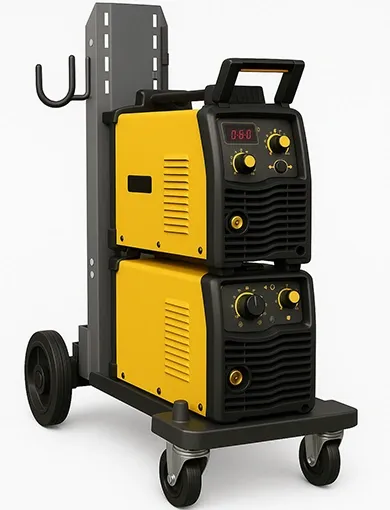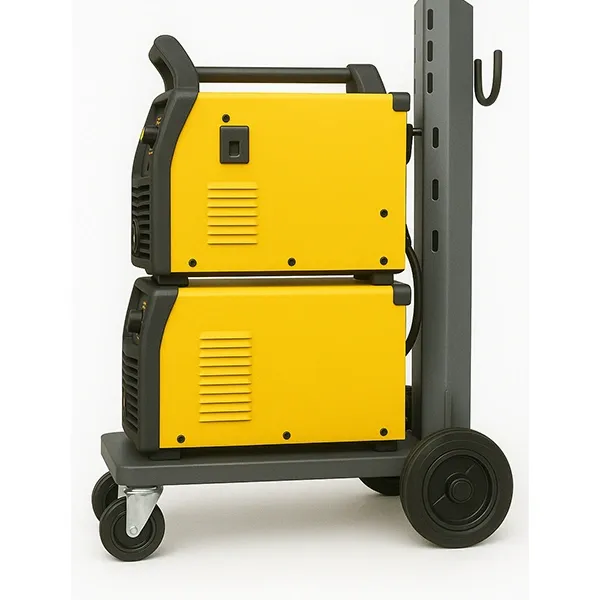AC/DC TIG Welding Machine Prices
AC/DC TIG welding machine prices vary depending on the product’s amperage, inverter technology, and current switching capacity. Their ability to be used in both steel and aluminum welding makes these machines attractive for professionals. As the technical equipment of the device improves, the prices increase accordingly.
AC/DC TIG welding machine prices can differ based on factors such as the manufacturer brand, quality level of the device, and the warranty period offered. Features such as a digital display, foot pedal support, and frequency adjustment directly impact the cost. While domestic devices are usually offered at more affordable prices, exchange rates significantly affect imported products. When making a choice, cost and long-term usability should be evaluated together.
TIG AC/DC Welding Machine Prices
Those considering the purchase of a TIG AC/DC welding machine will encounter a wide range of prices depending on various technical features and brands. These machines are frequently preferred in professional use because they offer precise welding on metals like aluminum and steel. Especially models designed for industrial use stand out with higher amperage values and advanced control panels.
TIG welding machines, by offering both AC (alternating current) and DC (direct current) modes, provide users with a wide range of applications. The factors that affect the price include: the current range supported by the machine, whether it has inverter technology, and the brand’s market reputation. In addition, the extra technical features of the device also play a decisive role in pricing.
Entry-level models are more suitable for personal use and small-scale repair jobs. While industrial segment devices come at higher prices, they offer advantages in durability and uninterrupted performance in the long term.

The main factors affecting prices are:
- The machine’s ability to operate in both AC and DC modes for TIG welding
- Extra features like digital display and memory mode
- Whether the device is domestically produced or imported
- After-sales service and warranty duration
High-quality welding machines provide higher efficiency and fewer errors for safer operations. In the long run, choosing a robust device reduces costs and improves work quality.
It’s not enough to only consider the price when choosing the right machine. Application area, usage frequency, and technical needs must also be taken into account during the selection process.
When choosing an AC/DC TIG welding machine, technical requirements should be carefully assessed based on the application area and the materials to be welded. As these devices are long-term investments, making the right choice offers cost advantages and increases work efficiency.
Key criteria to consider for the right choice:
- The type of material to be welded (aluminum, stainless steel, etc.)
- Amperage capacity sufficient for long-term operations
- AC mode feature for special metals like aluminum
- Mobility appropriate to the working environment; lightweight body, carrying handle, or wheeled design
- Digital display and storable welding parameters for precise adjustments
- Strong fan or liquid cooling systems to prevent device overheating
- Advantages of domestic production or the technical support assurance of imported models
These factors not only affect the technical adequacy of the machine but also its lifespan and operator comfort. When a model suitable for the need is selected, significantly fewer maintenance costs and production interruptions occur in the long term.
AC (alternating current) is preferred especially for reactive metals like aluminum, whereas DC (direct current) provides a more stable and smooth weld for materials such as stainless steel and carbon steel.
These machines can successfully weld many metals such as aluminum, stainless steel, carbon steel, and magnesium. The machine’s modes make this compatibility possible.
The inverter system allows the welding machine to be designed more compactly and operate energy-efficiently and stably. It also offers precise current control, making it easier to achieve high-quality welds.
The selected device should have a minimum warranty of 2 years. Additionally, brands with a widespread service network and easily accessible spare parts provide significant convenience for long-term use.
Models with simple controls are recommended for beginners. However, devices that include both AC and DC features will pave the way for more comprehensive use in the future.
For detailed information and the most suitable welding machine options for your needs, you can contact Eko Kaynak.

